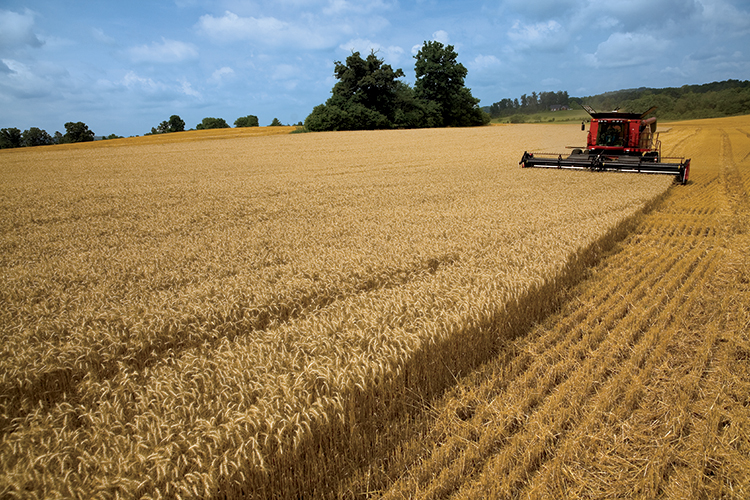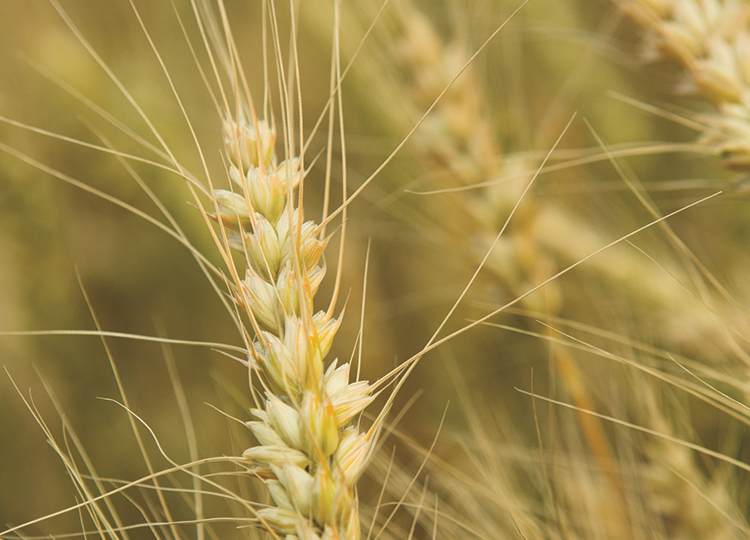Home > Michigan > Michigan Crops & Livestock > Michigan Wheat Fields of Gold
Michigan Wheat Fields of Gold
In partnership with: Michigan Department of Agriculture & Rural Development

Michigan producers are serious about the wheat they grow, with good reason. The most recognized names in the food business – Kellogg, Kraft, Jiffy – use Michigan-grown wheat in their products. In fact, Michigan white wheat is so prized that none of it is exported.
“It’s snatched up in the state by the millers here,” says Dean Kantola, a producer. “It’s neat to know that a product you grow in the field is in that box on the grocery shelf.”
Michigan grows about 50 million bushels of soft white and soft red winter wheat, and the impact on the economy is more than $390 million annually. Soft white is used in cookies, cereals, crackers and other products, and soft red is used in cakes and similar baked goods.
“The Great Lakes around Michigan temper the climate here and create a high-quality wheat,” Kantola says. “There’s something very specific and special about the wheat we grow here.”
![Michigan Wheat [INFOGRAPHIC]](https://eadn-wc01-4177395.nxedge.io/wp-content/uploads/2020/05/Screen-Shot-2015-04-01-at-3.05.57-PM.png)
Farmers Invest In Their Crop
In 2011, the state’s 8,000 wheat farmers voted to create the state’s wheat check-off program, which is funded through a one-half of 1 percent assessment on the sales of wheat and wheat seed grown in the state. Those funds are used for research, education, market development and promotion of the crop.
That kind of support, coupled with the quality of the crop and the expertise of the state’s growers, signals a promising future for Michigan wheat, says Jody E. Pollok-Newsom, executive director of the Michigan Wheat Program.
“The infrastructure is in place in Michigan,” she says. “We have five millers and major users located in the state. We have lots of market opportunities, existing infrastructure and end users. A lot of commodities don’t have some of those advantages in their industry.”

Research Is Key
“Our goal is to focus on research,” she says. “We want to help our farmers grow more with less. By funding research and sharing results and information, we will keep our industry on the cutting edge.”
The check-off program has funded more than 40 projects in the last three years. In 2014, the program budgeted $550,000 for research alone.
Kantola grows approximately 200 acres of soft white wheat with his brother, and is participating in some of the research initiatives, including a Michigan State University study involving using a type of radish as a cover crop. Early results indicate the addition of the radish may increase wheat production up to five bushels per acre.

A Healthy Choice
Sally McConnachie, who serves on the wheat board and farms about 1,000 acres with her husband, daughter and son-in-law (pictured right), wants to remind consumers of the positive aspects of wheat.
“Wheat is delicious, nutritious, affordable and plays a vital role in a healthy diet,” she says. “The USDA recommends that the average adult consume six one-ounce portions of grains each day.”
McConnachie notes that wheat is not a biotech crop. Rather, the crop has been developed through conventional breeding to make better use of water and nutrients and to be more resistant to pests and diseases.
“Farmers make up less than 2 percent of the U.S. population,” McConnachie says. “That’s a very small number of people actually growing food for the rest of the country and world. It’s understandable that people have questions about how their food is grown and an interest in the safety of our food supply.”
She says the wheat board seeks to help consumers understand that “an abundant, safe and sustainable food supply is something we all want for our families, our neighbors and our communities. Wheat has an important role to play in that goal.”




[…] 15. Michigan Wheat Fields of Gold – Farm Flavor […]